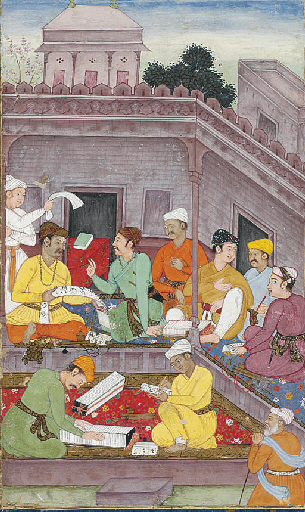

Young scribes and calligraphers in training, c.1590
Source:
http://www.christies.com/LotFinder/lfsearch_coa/LotDescription.aspx?intObjectId=5057627
(downloaded Mar. 2008)
"YOUTHS IN A SCRIPTORIUM. MUGHAL, CIRCA 1590. Gouache heightened with gold on paper, eight youths in brightly coloured robes sit in a scriptorium talking amongst themselves and practicing the art of calligraphy, they are attended by a manservant in white robes and looked upon by an elderly gentleman standing in the foreground of the composition, within cobalt, gold-speckled borders, mounted, framed and glazed. 5 5/8 x 3½in. (14.1 x 8.5cm.)"
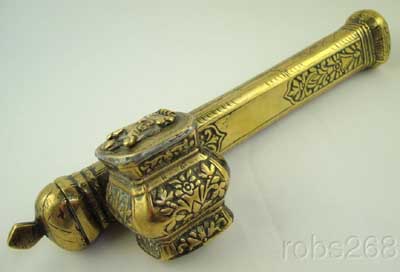 |
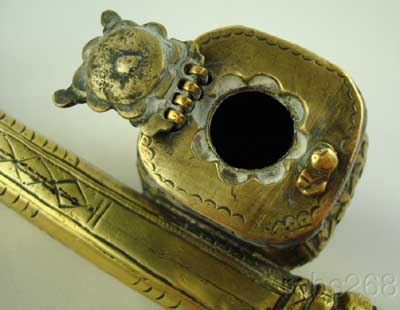 |
A pen-case of the kind that sits behind the two calligraphers, above; dated 1847
Source: ebay, May 2008
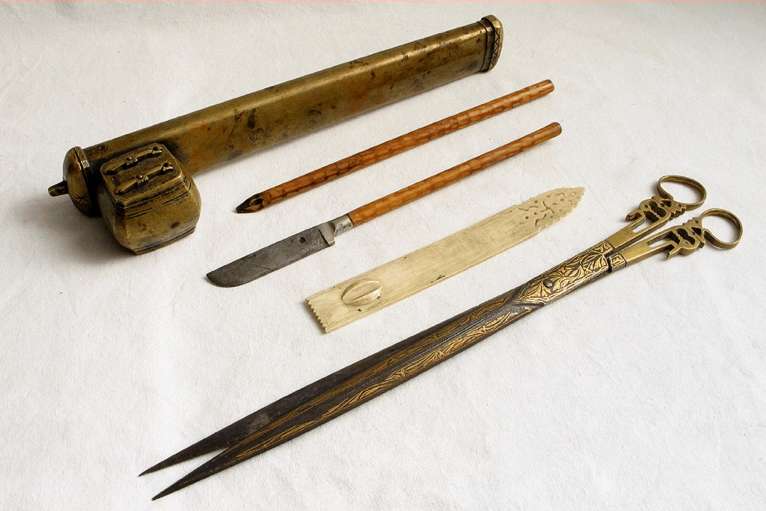

A princess practices calligraphy, c.1740
Source:
http://www.christies.com/LotFinder/lfsearch_coa/LotDescription.aspx?intObjectId=5057623
(downloaded Mar. 2008)
"THE LESSON. MURSHIDABAD, MUGHAL INDIA, CIRCA 1740. Gouache heightened with gold on paper, a mullah sitting on a terrace with a grey shawl draped over his cream robes, teaches the art of calligraphy to a princess finely dressed in a gold brocade coat and seated against a gold cushion with a gold pen-case beside her, her fellow pupils sit around her, turquoise border with gold floral illumination, slight staining, mounted, framed and glazed. 6½ x 5 1/8in. (16.4 x 13cm.)"
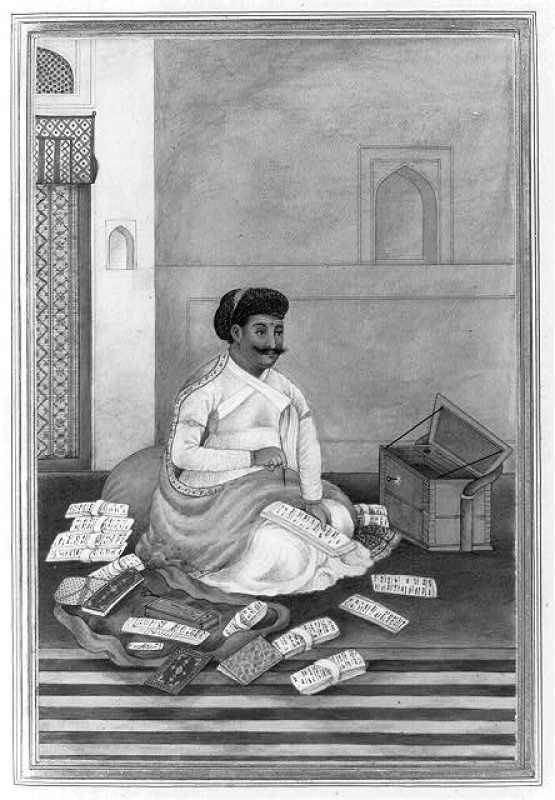
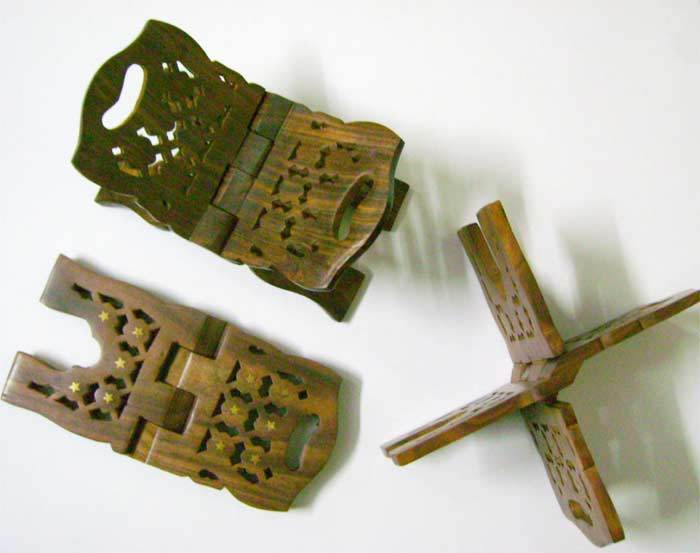
A modern example of he kind of folding rosewood bookstand that's before one of the princess's attendants, to the right; especially large and fancy ones were designed to hold an open copy of the Qur'an: *Qur'an stand, open*; *Qur'an stand, folded*
Source: ebay, Apr. 2008

"THE COURT OF RANJIT SINGH
BISHAN SINGH (1836-CA.1900), LAHORE, INDIA, CIRCA 1864
Gouache heightened with gold on thick paper, set in the Fort of Lahore
on the terrace of the ornate building with entrance arch in the lower
right hand corner and main buildings in the upper left, Ranjit Singh
sits towards the centre on his gold throne surrounded by brightly clad
family members and courtiers, in the background a hilly landscape with
further encampment, with gold, blue and black outer rules obstructed by
mount, signed in Gurumuki on a fragment of the surviving cover sheet,
'Bishan Singh Musavar Bannee', buildings and soldiers, paper slightly
discloured, minor flaking of paint, mounted, framed and glazed
Miniature 14 7/8 x 20½in. (37.5 x 51.9cm.)
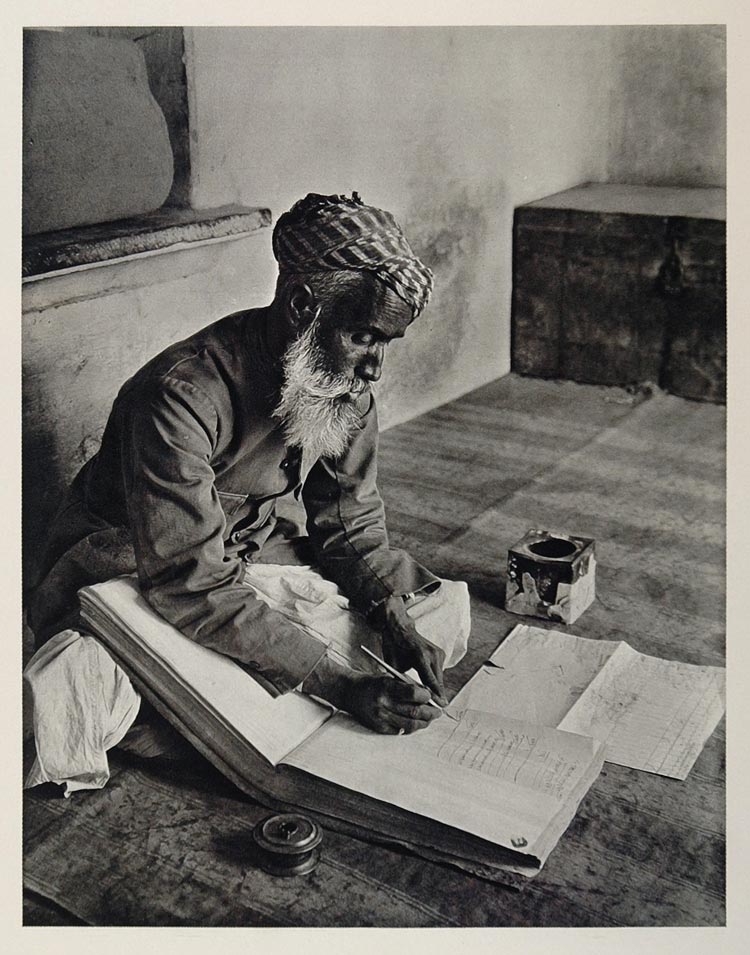
== Indian Routes index == Indian Routes sitemap == Glossary == FWP's main page ==